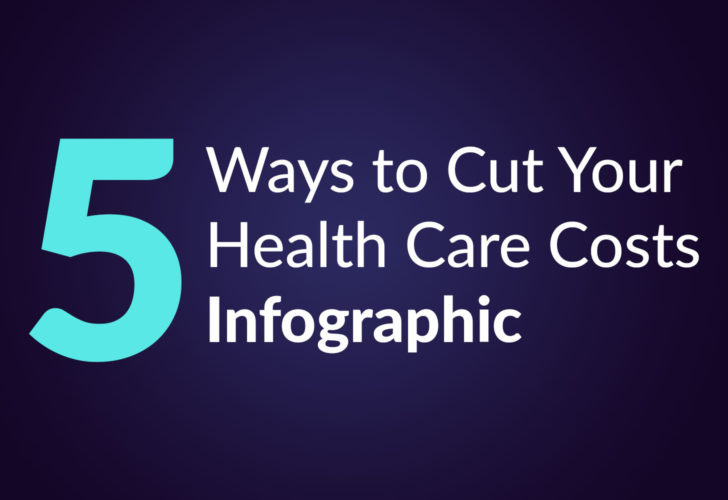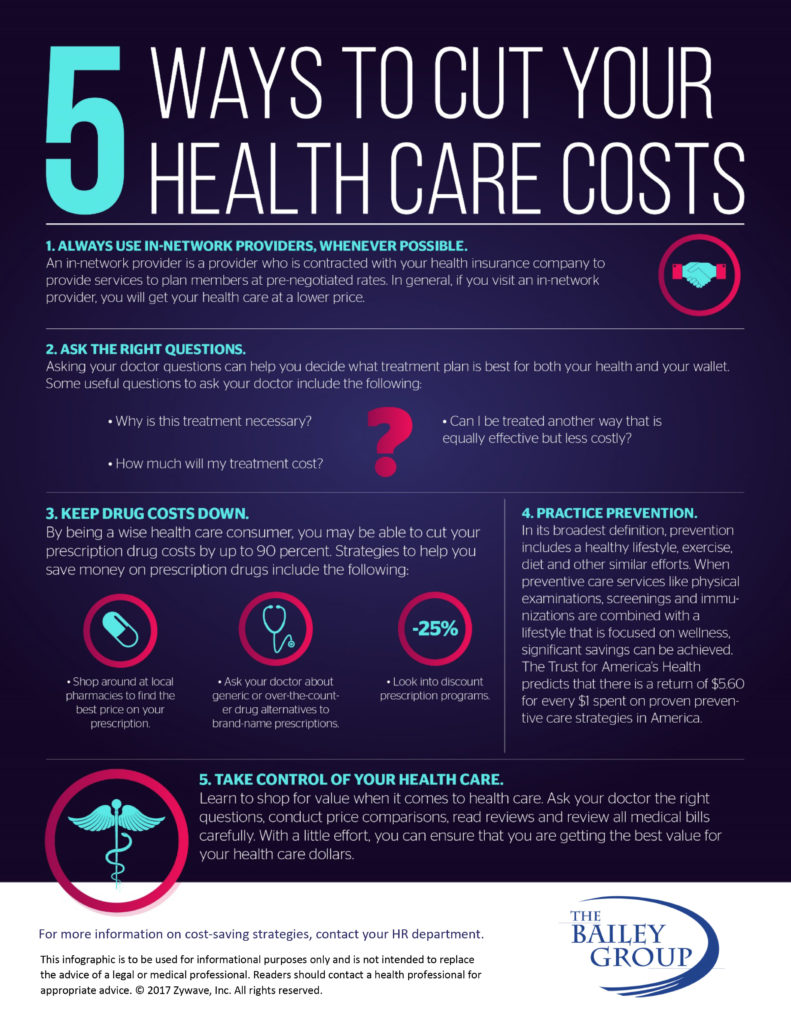5 Ways to Help Your Employees Cut Their Health Care Costs [Infographic]
By The Bailey Group Marketing
Published March 9, 2017

Consumer driven health plan (CDHP) enrollment continues to climb across the nation as a cost-savings initiative. As you’re probably well aware, CDHPs have the potential to be very beneficial by reigning in health care costs and improving employee health and morale.
Although the benefits of moving to a consumerism model are well worth the effort, it can be a challenge when first transitioning from the richer plan types your employees may be accustomed to.
The first critical step in your organization’s transition to a CDHP should be to educate your employees on the changes in order to ease their fears and clear up any confusion with their new plan – and not just during your open enrollment either.
Your communications plan should include year round messages on how your employees can best use their CDHP. Make it easy for them to quickly find the answers to their questions and take advantage of the savings account associated with their plan.
The following infographic is a great tool to give employees to quickly educate them on the top 5 ways to cut health care costs on a CDHP.
Feel free to download the infographic (as a pdf or jpg) and use it on your company intranet or in any of your benefits communications.
1. Always use in-network providers, whenever possible
An in-network provider is a provider who is contracted with your health insurance company to provide services to plan members at pre-negotiated rates. In general, if you visit an in-network provider, you will get your health care at a lower price.
2. Ask the right questions
Asking your doctor questions can help you decide what treatment plan is best for both your health and your wallet. Some useful questions to ask your doctor include the following:
- Why is this treatment necessary?
- How much will my treatment cost?
- Can I be treated another way that is equally cost effective but less costly?
3. Keep drug costs down
By being a wise health care consumer, you may be able to cut your prescription drug costs by up to 90 percent. Strategies to help you save money on prescription drugs include the following:
- Shop around at local pharmacies to find the best price on your prescription.
- Ask your doctor about generic or over-the-counter drug alternatives to brand name prescriptions.
- Look into discount prescription programs.
4. Practice prevention
In the broadest definition, prevention includes a healthy lifestyle, exercise, diet, and other similar efforts. When preventative care services like physical examinations, screenings, and immunizations are combined with a lifestyle that is focused on wellness, significant savings can be achieved.
5. Take control of your health care
Learn to shop for value when it comes to health care. Ask your doctor the right questions, conduct price comparisons, read reviews and review all medical bills carefully. With a little effort, you can ensure that you are getting the best value for your health care dollars.





